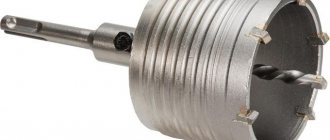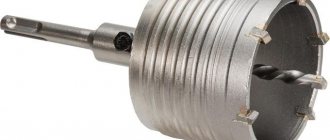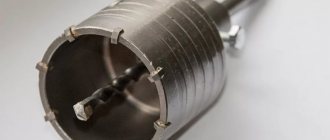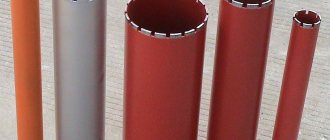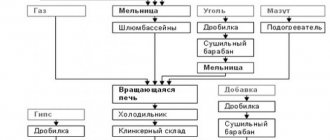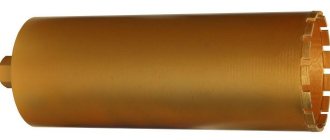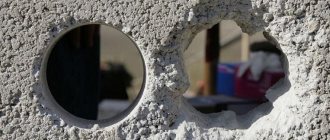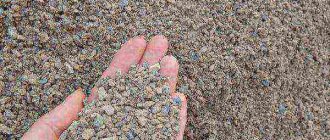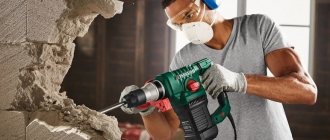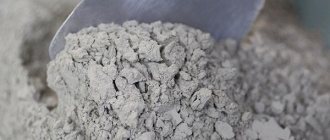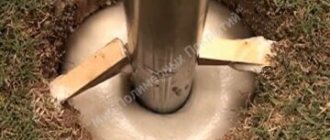Diamond bits for concrete are special attachments for drilling rigs or hammer drills, which are used for drilling grooves or holes in a variety of materials: concrete, asphalt, granite, and other hard coatings. Work can be performed at all stages of construction, repair and operation of facilities.
Diamond core bits for drilling concrete may differ in diameter, power, ability to install additional accessories (shanks, extensions, etc.), functions, working conditions and other criteria. There are universal elements, and there are those that are designed for specific tasks. Drilling concrete is important at different stages of repair and construction work when installing communications and wiring in walls, floors, ceilings; it may be needed for laying pipes and other elements.
Purpose
A diamond bit for concrete allows you to quickly and efficiently perform work that, without drilling with a hammer drill or using other processing methods, can take a lot of time and effort. Thanks to crowns, drilling of monolithic walls is carried out as efficiently as possible, taking into account the requirements and calculations.
Scope of application of diamond bits for concrete:
- Installation of a recess for a switch, socket, socket box
- Creating fasteners for a stair system
- Holes of different diameters and depths during the implementation of facade work
- Installation of boxes and various hanging structures
- Laying various communications through slabs - plumbing, electrical wiring, heating risers, ventilation and exhaust systems
Characteristics
Crowns for concrete are distinguished by height, outer diameter, type of cutting segments, length of SDS shanks, operating mode and the presence of a centering drill. For design bureaus of large diameters, special equipment is required that ensures the exact position of the hammer drill and the progressive advancement of the cutter into the depth of the concrete or reinforced concrete mass.
The working segments of the bits marked “M” have the property of self-cleaning from concrete dust. Crowns are used to cut out cavities in a monolith of low-strength concrete. Design bureaus of the “T” brand are equipped with hard cutters; they perform drilling at low speeds. The heads are equipped with diamond cutters that easily cope with high-strength concrete.
Design blocks of grade “C” are designed to fit in a monolith of concrete M 200 and M 300. Products of this type are in high demand among the population. Crowns with a diameter of 68 mm and 72 mm are used to cut out seats for hidden electrical wiring fittings.
Device Features
A diamond-coated concrete crown is a small piece of pipe made of durable tool steel, which can be made in different diameters and lengths. At one end of the cut there are strong and reliable cutting elements, while at the other there is a shank, thanks to which the cylinder is securely fastened in the tool chuck.
A diamond bit for concrete can be used with a hammer drill, impact and conventional drill, and other types of tools. The crown can be prefabricated/solid. In the center of the cut pipe there is a centering replacement drill (usually made with a carbide tip). Inside the cylinder there may be various sinuses that serve to collect waste from the working area.
Model range of crowns
Wide selection available. Let's look at five varieties.
One of the companies is SUPER HARD, which offers tools for working with concrete and other high-strength materials. High-precision heads are available with a diameter of up to 80 mm. According to experts, this is a universal product.
"Diam Almaz" is a domestic brand offering three types of crowns:
- series G – for concrete grades M100-300;
- Top – heavy concrete;
- S – intermediate option.
Consumers trust diamond drill bits from Bosch. Particularly popular are cylinders with a diameter of 68 mm, installed on grinders, hammer drills and drilling devices.
The American freema DeWalt also stands out, offering nozzles of different diameters. They make holes with a diameter of no more than 8 cm. However, there is a limitation - the tools are only suitable for diamond drills from this company.
Another well-known manufacturer is Enkor. The 48280 bit is compatible with drills and hammer drills. It can be used to drill into various materials (concrete, including reinforced concrete, brick). The instrument does not require cooling.
Wet and dry cutting
A diamond bit for concrete can involve two types of drilling – wet and dry. In a wet cut, water is supplied during operation, which washes away the sludge and cools the product. This option is relevant where it is possible to ensure a continuous supply of water. Otherwise, it is better to choose drills for dry cutting or with a portable water container.
Wet cut
involves a constant supply of water during drilling, which has a positive effect on the tool, as it cools it and protects it from overheating. High-quality crowns for wet cutting are produced by Japanese manufacturers, and products from Russian and Austrian brands have also proven themselves well on the market.
Dry cut
requires attention to the placement of the support post, since even a slight displacement can cause the crowns to fail. In order for the tool to serve for a long time, it must be lubricated regularly. The highest quality crowns for dry cutting are supplied by American and German manufacturers.
What are diamond core drills?
Diamond core drills are hollow.
As with all diamond drills, you should use water as a lubricant and coolant. Being hollow, water can flow up inside and around the inner core of these drills while drilling, helping to keep the drill cool and clear away debris.
Diamond core drills are available in sizes from 1 to 3 mm and from 3.5 to 60 mm and larger.
For drilling tiny holes in plates, glass, fused glass and for thin pieces of sea glass, we recommend using a small diamond drill bit. They are available in sizes from 1 to 3 mm.
Small Diamond Drill Bits or Small Diamond Core Bits – Which Should I Use?
Small diamond drill bits have a hard tip and therefore a larger surface area, so they last longer than small diamond core bits, but may take longer to drill a hole. They are stronger and therefore ideal for very strong and dense pieces of sea glass, very hard stone, gemstones, precious stones, hard shells, bones and antler.
Small diamond core drill bits will drill a hole faster than small diamond drill bits, but will not last as long because they have less surface area.
Diamond drill bits are ideal for cutting glass, sea glass, pebbles, stone, slate, ceramics, plates and shells. These are the best drill bits for rocks, crafts or crafts, and for professional craftsmen. Diamond tile drill bits are essential, they will drill holes much easier and with a smoother cut than any other tile drill bits.
If you regularly use diamond drill bits, it is worth keeping a combination of both small diamond drill bits and small diamond core drill bits in your toolbox, as sometimes you don't know if you have a very hard material until you start drilling. !
Is there garbage stuck inside the kernel?
As you drill up and down, water will circulate within the core of the drill bit and in turn allow debris to fall out.
However, if you already have debris stuck inside the core and you need to remove it, you can try a few of the following things:
- Drill into the next piece of material and this will usually dislodge it.
- Use a wire brush to knock out the stubborn core.
- Each core drill, 3mm and up, has a hole in the side or hollow throughout the entire length of the drill. Insert a pin into the hole or end to try to dislodge the core.
Water is ideal for use as a drilling lubricant. There are oil based lubricants but there is no need to go out of your way to buy them, we have tried and tested a lot over the years and water is still the winner!
Do you partially drill through the material, but don’t want to go all the way?
This is called a blind hole.
If you want to make something like a candle holder out of slate or stone, you will need to use a diamond drill bit and only drill through part of the material rather than making a hole. This is called a "blind hole".
If you want to set an object such as a bead or gemstone into the material, and you want the bead to sit flush in the stone, then it is better to use a diamond core bit whose diameter is slightly smaller than the diameter of the desired hole. do. You can then grind the edges with a diamond bit to ensure the bead fits flush into the hole.
Diamond Bottle Neck Core Drill Bits with 2.35mm (3/32") Shank
Typically the shank (the end that fits into your drill bit) on larger core drills (4mm and up) is too large to fit into a hobbyist style rotary tool. This means you will have to use a large, heavy regular household drill. However, the bottleneck diamond core drills shown below are larger core drills, but with a shank that fits your hanging drill bit.
“I love this tool - it makes it easy to drill a hole in ceramic and it is one of my most used tools.”
Advantages of the crown device
Diamond bits for a concrete hammer drill have certain advantages, which are determined by the correct choice of element for a particular job, correct operation, and the quality of the product itself.
The main advantages of diamond drill bits for concrete:
- Durability - if you use it correctly and do not overheat the device, the crown will last for several years or more
- High performance – throughout the entire period of use
- Endurance - despite the fact that for a certain type of work a diamond bit for reinforced concrete is more relevant, even universal products perform well when working with reinforcement, although their service life is reduced
- Versatility – the ability to use crowns on electric, hand-held, home or professional tools from any manufacturer
- Different materials - diamond bits are often used to work with both concrete monolith and stone, expanded clay concrete, foam concrete, etc.
- Drilling holes of increased depth
- Excellent quality of work - thanks to drill bits, you can avoid cracks and chips, guaranteeing a neat and even hole (with a minimum of collateral vibration and noise, which is important)
- Small amount of dust during operation
- Absence of shock and vibration loads, therefore finishing of the structure can be carried out safely and effectively even in emergency conditions
Kinds
Crowns for concrete differ primarily in the material installed on the cutting edge of the cup. It is this that determines the tool’s durability, productivity and quality of work. Hard metal alloys, tungsten carbide alloys, and diamond chips are installed in cutting bits.
Also, the material of construction of the working part of the cup determines the drilling method. Unstressed is used for tungsten carbide and diamond bits, impact - for carbide (toothed). Methods of cooling the working part are water (wet) and air (dry). In both options, the device can make holes for socket boxes.
Return to contents
Made from hard alloys
They are used for impact drilling with a hammer drill of holes in concrete to the level of metal reinforcement or without it. The cylindrical device is equipped with a cutting edge consisting of soldered carbide working teeth. The cup is attached to the rotating drive using shanks: SDS max, SDS, SDS.
The products are widely used for household drilling of a small number of holes with a diameter of 20 - 100 mm (including a diameter of 70 mm for sockets). The service life of the heads (without the possibility of restoration) is reduced by the intense shock load of the drive, which also negatively affects concrete structures.
Return to contents
Diamond
This is the most modern, technologically advanced and effective tool for drilling holes in concrete. Diamond bits for concrete are equipped with soldered wide cutting segments (solid cutting surface) with diamond (corundum) abrasive. They are used for drilling reinforced concrete using a non-impact method, which protects load-bearing structural elements.
Cutting ring spray is also used for drilling, for example, tiles, ceramic tiles, which requires finesse in work. The tool has a significant service life (worn edges must be restored), which increases its economic efficiency. The surface of the holes has predetermined dimensions and smooth walls, since the concrete is crushed by a crown with ultra-strong tiny crystals, and not cut.
Return to contents
Types and characteristics
Diamond cutting edge bits are differentiated by diameter, drive connection design, cylinder length, type of cutting segments, method of use, and mode of operation of the drive mechanism. Working segments with a soft matrix (marked “M”) in the crown are used on particularly strong concrete. They easily self-clean from clogging with drilling products. On ordinary reinforced concrete, diamond bonds of medium hardness (marked “C”) are used.
Segments with solid matrices (type “T”) are used at reduced speeds, including on high-grade concrete. There are products with different frequencies of segment placement and a continuous ring of diamond crystals. All attachments are used for wet and dry drilling. However, the KS crown (matrix “C”) is structurally different in that it has specially shaped cavities on the cylinder that facilitate air cooling.
The concrete bit with a diamond cutting surface is used in a non-impact mode, which makes it easy to pass through reinforcement. Drilling machines have many standards for fixing the bits to the shaft. They differ in size, design, and methods of shank attachment (BSP, SDS, thread). It is important that the shank (with adapter) matches the drill clamp. According to the outer diameter, the cups are classified into: small (up to 1.2 cm), medium - 3.5 - 8.2 cm (used when forming holes for socket boxes - 70 mm), large - with a diameter of 15 to 40 cm and extra large - 40 – 120 cm.
The design of the heads, depending on the diameter, may contain a different number of working segments. For example, a cylinder with a diameter of 4.6 cm has 5 cutting elements, and a product with a diameter of 65 cm has 32 segments. The length of the fixture pipe characterizes the working depth of drilling through holes in structures of various thicknesses. The length of passage of concrete material is up to 500 cm. Such products have a significant resource, for example, a cylinder with a diameter of 20 cm with high-quality diamond cutting segments passes up to 20 m/linear. medium reinforced concrete.
Return to contents
Principle of operation
Work on concrete involves the use of a hammer drill in non-impact mode. The machine is secured to anchors, which ensures accurate drilling direction and eliminates distortions and jamming of the cylinder in the hole. This feature reduces the noise level and the amount of dust. However, it is also possible to carefully use hand tools, for example, when drilling recesses with a diameter of 70 and 100 mm for socket boxes. The crown is installed and secured in the drive lock.
During operation, it destroys the material only under the thin diamond cutting surface, and at the end of through drilling, a cylinder of stone remains in it. The best option is drilling with running water, which protects the cutting edge from overheating and eliminates sludge and dust. An alternative would be to use cylinders designed for air cooling.
Return to contents
Examples of manufacturers
The market is filled with crowns that have various features and benefits. BOSCH - high-precision, durable professional products with universal adapters. CEDIMA - products effectively pass concrete up to 5 m thick. AEG - products with universal adapters that ensure quick replacement and are compatible with other equipment. Operates reliably at 8000 rpm.
Tyrolit offers a wide range of hollow drills. Rothenberger produces diamond bits and components in cooperation with leading enterprises. High quality products are also provided by Adel, SPLITSTONE, Alaton, and EuroPrice. "Niborit" etc.
Return to contents
Tungsten carbide
They work reliably only with unreinforced concrete. The products are also well suited for drilling tiles. The drive can be a drill with a power of 800 W or more, in which a special 6-sided cup shank is fixed. Suitable for drilling holes for socket boxes (a plastic product into which sockets are installed) with a diameter of 100 and 70 mm.
Return to contents
Features of choosing diamond cylinders for concrete
Modern manufacturers offer diamond crowns in a wide variety. According to the principle of operation and design, they are all approximately the same - a small cylinder in the form of a pipe, at one end of which there is a cutting element, at the other - an attachment to a tool that works as a drive.
Typically, choosing a crown involves determining the type of shank and type of tool. Thus, manufacturers equip diamond drill bits with a cylindrical SDS shank. But it is worth considering that for a drill the device is made with a cylindrical or multifaceted shank. The cylinder for recesses for sockets can be equipped with either type of shank.
There are bits with universal shanks that can be used in a wide variety of tools. But manufacturers of electrical equipment and tools used in repair and construction work advise choosing crowns from the same companies as the tool itself. Logically, they must correspond exactly to each other and ensure the highest quality of work.
Criteria for choosing a diamond crown:
- Concrete hardness, presence of reinforcement.
- Wet or dry drilling.
- Diameter of holes (depends on the task at hand - thickness of the cable being laid, socket box, pipe cross-section, etc.). So, for drilling for a socket, it is better to choose a crown that is 2-3 millimeters larger so that the product is firmly attached to the gypsum mortar. Before purchasing a crown, you need to know exactly the diameter of the element for which the hole is being made.
- The type of tool, compatibility with a particular consumable, the power of the hammer drill - so, if a tool with a power of 1 kW is used in the work, it is not recommended to drill a hole larger than 25 centimeters. For more powerful hammer drills, nozzles of any diameter are suitable.
- Fixation of the teeth of the crowns on the shaft - the deeper the cutting teeth sit in the tube, the longer the service life of the crown will be.
- The design of the nozzle shank can be solid, with a different number of open/closed grooves (various modifications of the SDS fastening system, which are marked as top, plus, quick, max), for mounting in a cam-type drill chuck.
What are concrete chisels made of?
Most often, chisels are made of forged steel.
Chisels are most often made of forged steel (chrome vanadium, chrome molybdenum). The material has sufficient strength, which ensures efficient operation. The device is hardened at a temperature of 750-8000. In artisanal conditions, it depends on what grade of steel is used, for example, 730-9500 is suitable for low-carbon steel.
Warm up the device evenly, without temperature jumps, so that there is no jump between the working and internal parts. After this, it must be placed in the oven. This technology will have a better effect on steel than rapid heating. After heating, it must be cooled sharply with water or oil. There should be a lot of liquid.
To obtain maximum strength, the metal must first be cooled slowly, and from 650 to 400 degrees - quickly. There is no need to be afraid that the liquid begins to evaporate and as a result the metal is not in it, but as if enveloped in steam. This is a normal course of the process. It provides slow cooling. When the chisel is less hot, this cocoon will disappear and it will quickly become colder.
It is necessary to place the device in water perpendicular to the surface and slowly, with the cutting edge down, after which it is necessary to turn it in different directions to avoid a sharp temperature change and reduce the cocoon. This technique will help harden the edges and leave the core dynamic.
Recommendations for use
In the process of performing any work using a diamond bit for concrete, you must follow the rules of electrical safety, safety precautions, and do not forget about special clothing and personal protective equipment, which will avoid injuries and various troubles.
Before you start making holes in the walls for dismantling work or implementing any other tasks, you need to make sure that the tool is in working order and the crown is attached correctly and securely. Before drilling begins, the area is marked and holes in the required quantity are made according to the marks. Periodically, you need to allow the cylinder to cool down so that it does not overheat, which significantly reduces its service life.
You should not skimp on the quality of crowns, as this will greatly affect the quality of the work performed. As a result, saving and using low-quality bits or ones not recommended by the tool manufacturer can lead to damage to the material being drilled, the bit itself, the perforator, and also cause injuries.
Introduction to the crown
The crown for sockets has the shape of a hollow metal cylinder with side holes through which construction dust is removed, on one of the end sides there is a flange for fastening, usually having an SDS standard (Max or Plus), and on the other side there is a cutting edge and a centering drill. The latter provides stability so that the crown does not make oscillatory movements when drilling.
Drilling efficiency
According to tool manufacturers and craftsmen, maximum work efficiency can be achieved using high-quality crowns and powerful tools made with a pneumatic or electric drive.
Basic conditions for work efficiency:
- Using a diamond bit for concrete to make holes for tasks such as laying various communications in reinforced concrete walls (plumbing, heating pipes, connecting units, electrical wiring, risers, ventilation, hoods, attachments, air conditioners, facade work).
- Diamond crowns must be used for their intended purpose, with precise selection of the required parameters.
- The cylinders must correspond to the tool in diameter, power, and be attached accurately and reliably. The size of the instrument and its correspondence to the crown also play a role. The marking usually includes all the necessary data (drill, hammer drill, M16 and other values).
- The master has certain skills and knowledge - at least minimal, in order to work correctly and in compliance with all standards and requirements. Small and medium-sized tubes can be used for DIY work; in other cases, it is better to leave the work to a master.
How to attach diamond bits to a drill bit? Will they fit my drill?
Very small diamond drill bits, ranging in size from 0.75 to 3mm, will not fit in a rotary drill or DIY drill without a suitable collet or chuck to hold them.
Approximately half the shank of the diamond-tipped drill bit should be in the drill bit, leaving half the working end of the drill bit exposed.
The bottleneck diamond core drills mentioned in the previous section "What are Diamond Core Drills?" have a 2.35mm shank and are therefore suitable for use with your drill bit as long as you have a collet or chuck to hold them. They are very popular with cold glass artists.
Principles of working with a diamond cylinder for drilling concrete
To perform the assigned tasks with the highest quality, you must be able to work with tools and a diamond bit for concrete. There is nothing complicated in the work, but there are certain principles that must be adhered to.
Rules for working with diamond bits for concrete:
- Do not press too hard - this may impair the performance of the cylinder and reduce its service life, leading to breakdown.
- When working with reinforced concrete, it is better to use a dry cut and be sure to check the reliability and strength of the fixation. If the fixation is unreliable, the cylinder may become deformed and become damaged beyond repair.
- If diamond segments and edges are fixed with solder, then a water supply must be used during the work. If there is no cooling, the solder can noticeably weaken and even become deformed.
- The size of the installation must be correctly selected, match the assigned tasks, and guarantee the required level of efficiency and quality.
How to do the work yourself
Now let’s figure out how to use a concrete crown so that it lasts a long time and the work process goes quickly and efficiently.
First you need to collect everything you need:
For socket boxes a diameter of 70 mm will be used. When purchasing, pay attention to the working segments; they should be thick enough.
There should be no traces of soldering at the junction of the cutting part and the crown, as this indicates low reliability.
Application of carbide bit
Carbide bits for concrete are used where impact drilling with a rotary hammer is required to the level of laying reinforcement. In this case, the cutting edge of the crown is made in the format of several teeth, and the opposite one is equipped with an SDS shank. Carbide bits are usually used where small holes need to be made (most often in everyday life, not in industry).
Due to the fact that the tool has a high impact force, the service life of the cylinder is significantly reduced, and the effect on the concrete structure is not very good. Carbide crowns, unlike diamond ones, cannot be restored.
Purpose
Hollow inside equipment for drilling and drilling (through) concrete is designed for removing material of any strength from monolithic structures, which allows you to create technological holes of large and small diameters. And also solve everyday problems, for example, preparing places for installing socket boxes for electrical networks. Crowns greatly speed up and simplify this work, ensuring accuracy and precision.
Return to contents
Diamond hole cutting
- Before starting work, you need to make sure that there is no reinforcement in the concrete monolith that could damage the tool.
- If the mechanism has a centering drill, it is placed in the center of the mark on the drilling surface - now you can drill. If there is no drill, the cutting edge of the cylinder must be applied to the concrete surface with all teeth at the same time.
- Dust is removed using a construction vacuum cleaner equipped with a special hose attachment.
- You can drill continuously to the desired depth, without stopping.
- If you need to make a hole through, the drilled piece of concrete should remain inside the cylinder, then it is removed along with the nozzle. If the holes are not made through, the remaining piece of concrete in the center is removed with a chisel or chisel using the chipping method.
- To speed up drilling, you can deepen the tool a small amount, then take it out and make several holes in the contour of the circle to the required depth with a Pobedit drill with a diameter equal to the width of the cylinder teeth. Then drilling continues with the selected crown.
How to use?
The work is carried out in compliance with safety and electrical safety rules in protective equipment. The correctness and reliability of the crown assembly is checked. The machine is set up and fixed, or a manual perforation device is used. The equipment is directed exactly along the axis of the planned passage of the hole. First, a centering drill works along the markings, and then the cylinder cup is completely immersed into the concrete without effort.
If necessary, allow the cutting cup to cool. Once complete, the drilled material is removed from the hole. A correctly selected crown allows you to easily, quickly and accurately make a hole of the required diameter even in the most durable concrete structure.
Resuscitation and care rules, overheating protection
If a diamond bit for concrete has ceased to perform its functions normally, first of all, it is advisable to find out the causes of the malfunction.
First, the possibility of failure due to wear is established, then the body is inspected for cracks and the consequences of horizontal runout. If everything is in order, you can solder several segments to replace those that are worn out.
To extend the time between repairs and significantly increase service life, craftsmen recommend doing everything in strict accordance with the rules specified in the instructions. The crown is afraid of overheating and cannot be used to work with materials that are not listed in the technical data sheet. It is also important to ensure that the water cooling regime is not disturbed in wet models. Diamond bits for brazing concrete must be of high quality, made in accordance with standards.
Overheating protection is provided by the cooling system. When cutting wet, water flows in the required volume and continuously, cooling the diamonds. To operate the tool, the pressure in a regular water supply is sufficient. The required volume of water is determined based on the diameter of the crown head (all data must be indicated in the instructions). Exceeding the value may make it difficult to advance the tool; if there is little water, the segments are more likely to wear out.
Problems with overheating, speed, pressure or leaking diamonds?
If you smell something burning, step back! Either your speed is too fast or the pressure you apply is too much. The drill bit should never be hot to the touch, not even hot.
Start at your drill's lowest speed. Start slowly and increase as the drill moves through the material. However, ideally the speed should be kept at a constant low.
If the speed is too high, it will cause the drill to overheat and crack the material. In addition, the drill becomes dull faster, which shortens its service life.
If the diamonds are flaking or falling out of the shank, it's probably due to too much pressure - let the drill bit do its job and apply very little pressure.
Feel your way into the material. When in doubt, practice on a piece of glass or garden pebble until you get used to the technique.
As a general rule, the smaller the diameter of the drill, the higher the drilling speed you can use (ideally 5,000 to 7,000 rpm). The harder the material, the slower the drill speed.
Remember:
- Lowest speed
- Coolant
- Minimum pressure
If the drill clicks, too much pressure is being applied. The shanks are made of hardened steel and will only break or break when under too much pressure.
How to avoid injury when working with a crown on a hammer drill
Regardless of what device is used, a regular household hammer drill or high-power units, safety rules must be followed and everything must be done to avoid injury.
How to work safely with a diamond bit:
- Before starting work, you must make sure that the crown is tightly and securely fixed, clamped with a fixing bolt (if the cylinder is collapsible).
- Carry out work in special clothing and safety glasses to avoid splinters of material getting into your eyes or body.
- Use a respirator to avoid breathing the dust that appears during the drilling process (you can also wet the area where the hole will be to reduce the amount of dust).
- For work gloves, choose rubber ones, since ordinary fabric or woolen ones can easily be damaged or wrapped around a rotating cartridge, which often leads to hand injuries.
Diamond bits for concrete are products that allow you to quickly, efficiently and efficiently make various holes in walls, ceilings, floors, and other concrete monoliths for laying communications, pipes, wires, installing ventilation systems, etc. Correct work with a high-quality tool guarantees a long service life and complete safety of operation of the tool.
Choosing crowns and what to look for
Each type of tool, including attachments, has certain characteristics
These characteristics are important to consider when choosing products. If you plan to carry out work using a hammer drill, then before choosing a product you need to look at what type of chuck is installed on the tool
In addition, when choosing, it is important to consider the following information:
- The diameter of the product bowl. Depends on what size hole you need to drill in the wall. If you need to get an accurate hole in the wall up to 1 mm, then when choosing, take into account the fact that the diameter is several millimeters larger due to the protruding teeth
- Cooling method. Doesn’t play a big role unless you plan to drill holes in reinforced concrete or granite
- The type of material from which the cutting teeth are made. It all depends on what material you plan to drill with a crown.
- Price. An important factor characterizing the quality of the device. However, you need to understand that even if the product is very expensive, if it is incorrectly selected for drilling material, this will lead to its damage
The manufacturer also needs to pay attention if there is a desire to get a quality product at a high price. However, remember that not only branded products can be characterized by high quality
Crown in operation with water cooling
At what speed should I use my drills?
Use diamond drill bits at low speed, especially when making the initial hole. This will prevent material breakage and extend the life of the drill.
It is recommended to use the lowest drill setting, but if you are drilling a hole all the way through the material and really increasing the speed, make sure you slow down as you approach the exit hole to prevent cracking.
Keeping the speed low when drilling will help prevent material damage and extend the life of your drill bits.
